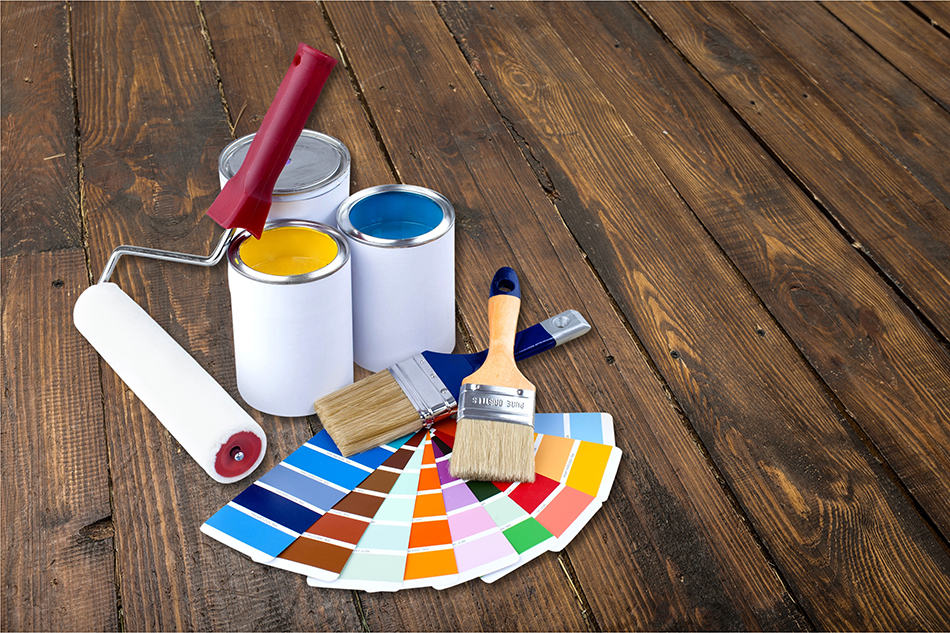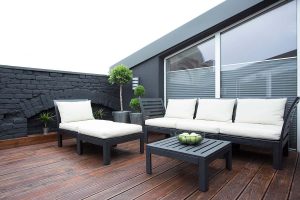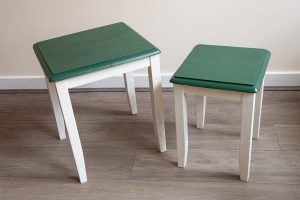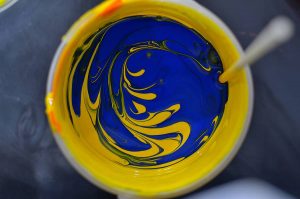Choosing which type of paint you should use on your interior decorating project can be a minefield as we are faced with so many options of paint types at the hardware store, and that’s before you’ve even selected which color you are going to use!
Here we explain the differences between vinyl matt paints and non-vinyl matt paints and which situations would be best for these types of paints.
What is Vinyl Matt Paint?
Vinyl matt paint is a water-based emulsion that has had a type of resin added, made from vinyl. The addition of this resin gives the emulsion a more hardwearing characteristic compared to the standard non-vinyl emulsion, with a consistency similar to acrylic or oil-based paints. What you will notice about acrylic or oil-based paints is that while they are very durable and ideal for high traffic areas, they will have a sheen or gloss finish to them, which isn’t always appropriate for certain parts of the home.
By comparison, vinyl matt paints have been specially formulated to be durable yet with a matt finish that resembles regular non-vinyl matt paint. This makes it a great choice for living rooms and other casual spaces in the home where you wouldn’t want high-gloss wall surfaces.
Pros and Cons of Vinyl Matt Paint
Vinyl matt paint offers numerous benefits when compared with non-vinyl matt paint; however, it isn’t suitable for all purposes, and indeed, there are some parts of the home where vinyl matt paint is a poor choice. Here we look at the pros and cons of vinyl matt paint when compared with non-vinyl matt paint for residential interior design uses.
Pros:
Increased durability
Vinyl matt paint offers improved durability compared to standard matt paints, which have a tendency to become scuffed or marked easily. By comparison, vinyl matt paint stands up to wear and tear at a better rate than regular matt paint.
Longer lasting
Due to the resin content in vinyl matt paint, it is able to last longer than regular matt paint. This means that you won’t need to repaint your room as frequently as you would ordinarily expect or regularly touch up patches that miscolor.
Higher opacity
One of the best things about vinyl matt paint compared with non-vinyl matt paint is that it has a higher opacity. This means that the paint has a thicker, more pigmented consistency, as opposed to the ‘watery’ consistency you will often find with regular emulsion. The result of this is that you won’t need to apply as many coats to your wall to get an even finish, and therefore won’t need to buy as many tins of paint to finish your project compared to regular matt paint. This will save you both time and money over the whole project.
Professional finish
Vinyl matt paint offers a more professional finish compared to standard matt emulsion. If you have your home decorated by professional contractors, it is highly likely that they will use vinyl matt paints in areas of your home where you would ordinarily use regular emulsion. It stands to reason, then, that if you want to achieve a more professional finish that you should use the same vinyl type of matt paint that trades people use.
Covers imperfections
The fact that vinyl matt paint has a matt finish means it is excellent at hiding imperfections on walls. One of the reasons people avoid using more durable paints on residential walls is because they have a sheen and therefore draw attention to any lumps, bumps, cracks, or flaws by making the light reflect on that area. As a result of having imperfect walls, many people have to settle for non-durable or low opacity paints; however, with vinyl matt paint, it is possible to have the best of both worlds with a matt finish that helps to disguise imperfections on the wall, while also having a better quality, more durable paint.
Cons:
More expensive
Vinyl matt paint is more expensive to buy than non-vinyl matt paint, which is one of the key reasons why people choose non-vinyl matt paint for their homes. However, this is a false economy because non-vinyl matt paints require more coats to get a good finish, and therefore you will end up buying a higher quantity of non-vinyl matt paint, which balances out the cost. Non-vinyl matt paint will also need to be repainted more often than vinyl matt paint because it is less durable. This means that vinyl matt paint, in spite of costing more per gallon, usually ends up being a better investment in the long run.
Not scrubbable
Vinyl paint is more durable compared to non-vinyl matt paint; however, it can not be scrubbed clean. If you find a splatter of food or mud on your wall, you will need to wipe it down gently with a wet cloth to remove the stain, which may leave a streak or watermark behind. Scrubbing vinyl matt paint can rub the paint away because, ultimately, it is still water-based paint. If you need paint that can be scrubbed clean, for example, in a kitchen or bathroom where walls are more likely to get marked, you would need to choose a paint that has a slight sheen finish, for example, eggshell. The fact that vinyl paint cannot be scrubbed clean makes it impractical for use in certain areas of the house, including high traffic areas such as hallways or rooms that are prone to high humidity, such as bathrooms and kitchens.
Not suitable for exteriors
Vinyl matt paint is not formulated for use outside, and it is not weatherproof, and therefore should be used for interior decorating only. Despite having a vinyl content, vinyl matt paint is still water-based paint and, therefore, will not stand up against rain, snow, and extreme temperatures. For exterior projects, you will need to select an oil-based paint that will be much more hardwearing and suitable for use outdoors.






